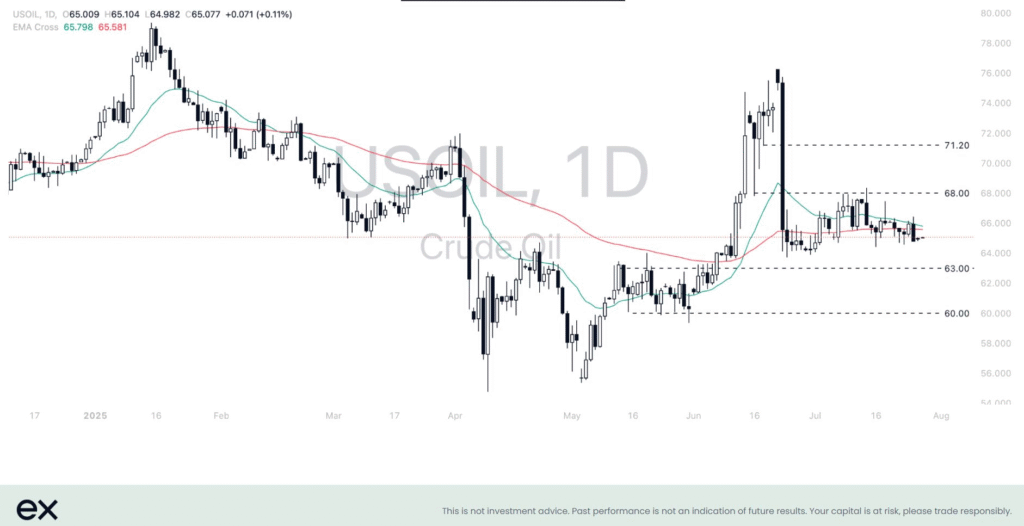Oil prices inched upward on Monday after a trade deal between the United States and the European Union calmed market jitters. Also contributing to market optimism was a possible extension of tariff relief between the US and China.
Traders saw these moves as signs that global fuel demand might not weaken as feared.
Brent crude rose by 22 cents, or 0.32%, to reach $68.66 per barrel in early trading. Similarly, US West Texas Intermediate (WTI) crude climbed by 22 cents, or 0.34%, hitting $65.38 per barrel.
IG Markets analyst Tony Sycamore said the deal and potential China extension were boosting oil markets.
“The US-European Union trade deal and a possible extension in US-China tariff pause are supporting global financial markets and oil prices,” he stated.

On Sunday, the US and EU struck a framework agreement that would impose a 15% import tariff on most EU goods—far less than the earlier threat of 30%. This move eased tensions between the two economic powerhouses, which together account for nearly one-third of global trade.
The deal averted a damaging trade war and reassured investors worried about a slowdown in fuel consumption.
OPEC+ Plans Hold, But Venezuela’s Shadow Looms
While prices climbed slightly, analysts warned the gains could be short-lived. OPEC+ members are sticking to their plan to raise oil output by 548,000 barrels per day in August.
A meeting scheduled for 1200 GMT on Monday was not expected to change the output plan, according to four delegates.
“It is unlikely to recommend altering existing plans,” one delegate said. Another source noted it was “too early to say.”
Summer demand is helping to soak up the extra barrels, and the producer group wants to reclaim lost market share after deep cuts during the pandemic.
Yet, another supply shadow is creeping in.
Venezuela’s state oil firm PDVSA is preparing to resume operations in joint ventures. Sources revealed that the company is waiting for former Biden-era licenses to be reinstated by President Trump, allowing its partners to operate and export oil under swap deals.
Last Friday, oil prices touched their lowest in three weeks. Rising global trade tensions and the expected return of Venezuelan crude added to the downward pressure.
Houthis Threaten Oil Shipping Amid Middle East Tensions
Meanwhile, conflict in the Middle East added new risks to global oil supply.
Yemen’s Houthi rebels declared on Sunday that they would now target all ships tied to companies that do business with Israeli ports, regardless of nationality. They described this action as the “fourth phase” of their campaign against Israel in response to the Gaza war.
Global oil demand rose by 600,000 barrels per day in July compared to a year earlier, according to JP Morgan. Still, global oil inventories also grew by 1.6 million barrels per day—raising concerns that supply might be outpacing demand.
As trade wars ease in the West, is it likely that conflicts in the Middle East could become the new oil price drivers?Rate, Like 👍, Comment💬, share this article, Follow us on our social media handles, and Submit your own story to get featured and earn rewards!







